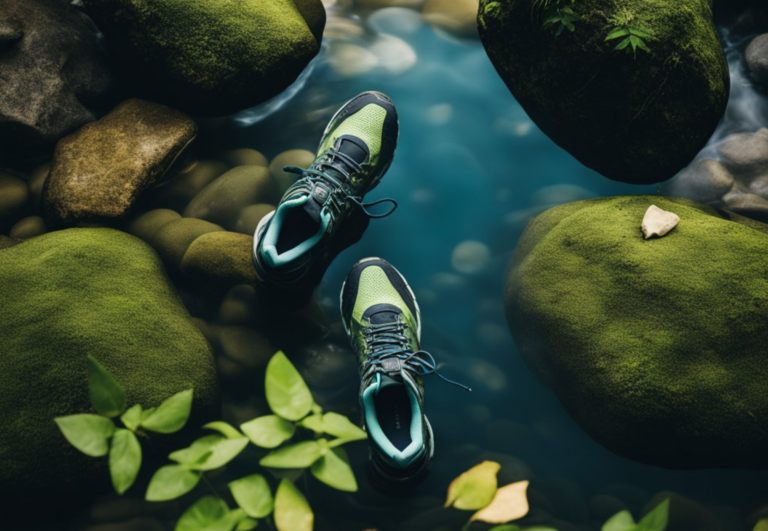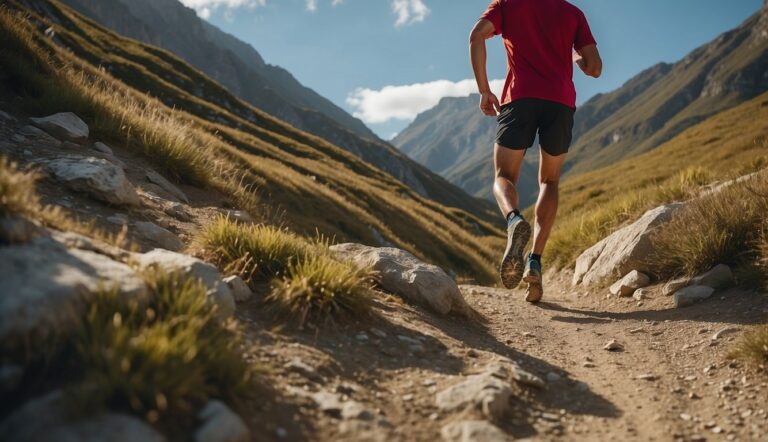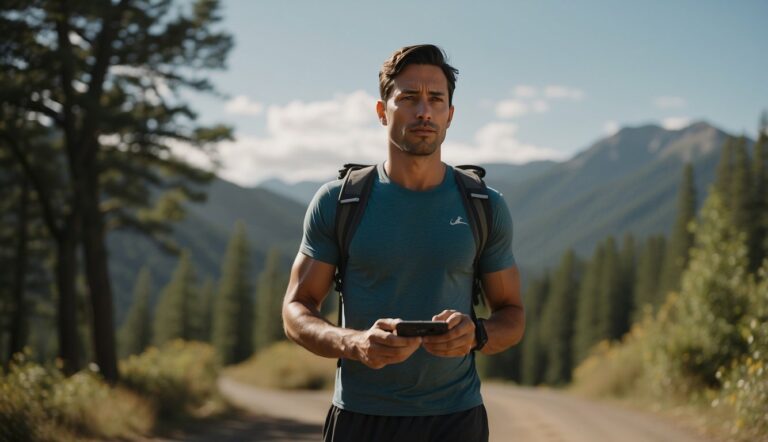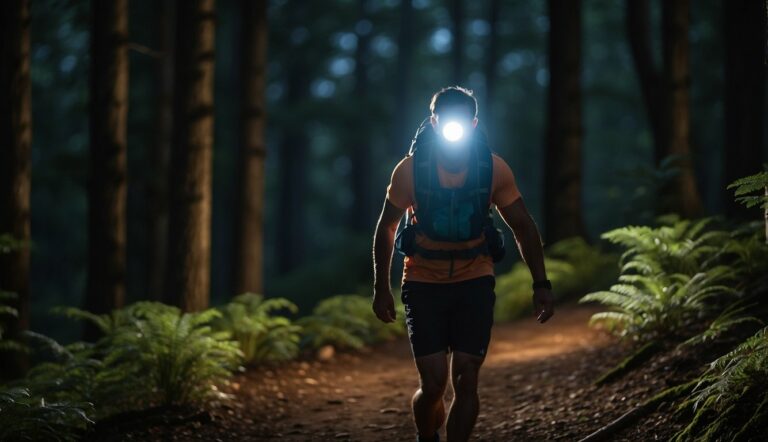Trail Running and Conservation: Exploring the Symbiotic Relationship
Trail running intertwines with conservation in a unique way, as both the activity and ecological stewardship share a common ground – the trails. As an experienced UESCA certified running coach, I understand the profound impact that running on trails has on both the runner and the environment. By navigating through public lands and wilderness, we as trail runners not only reap physical and mental benefits but also deepen our connection with nature.
This connection fosters a sense of responsibility towards the landscapes we traverse. Conservation efforts on trails play a pivotal role in maintaining these natural habitats, ensuring that they remain intact for the diverse species that call them home. By practicing responsible stewardship, such as adhering to trail paths and being mindful of the local flora and fauna, runners can minimize their impact and help in landscape conservation.
It’s imperative that we consider our footprint on these habitats as an integral part of our running practice. Embracing principles of conservation during our runs positions us as allies in the fight to preserve the intricate tapestry of nature’s trails. My experiences have taught me that by respecting and understanding the trails, we contribute to the sustainability of these precious public lands for future generations of runners and wildlife alike.

The Interplay of Trail Running and Nature Conservation
As a UESCA certified running coach passionate about both the sport and our environment, I understand how trail running can significantly contribute to nature conservation. Let me guide you through the vital role trails play in conservation, how runners can advocate for environmental justice, and the necessary balance between enjoying the outdoors and preserving it.
Importance of Trails for Conservation Efforts
Trails are not just pathways for recreation—they are critical for the preservation of natural areas and wildlife species. They enable land stewardship, supporting the health of various ecosystems while allowing controlled access to protected areas.
Effectively designed trail systems minimize human impact on habitats and ensure the sustainability of public lands, which include resources managed by entities like the National Park Service.
- Key Role of Trails:
- Resource Management: Designated trails direct foot traffic, reducing erosion and protecting sensitive areas.
- Wildlife Protection: Trails help maintain undisturbed habitats for local flora and fauna.
- Education: They serve as outdoor classrooms, increasing public awareness about conservation needs.
Trail Running as a Platform for Advocacy
My experience has shown me that trail running is a powerful advocacy tool. As we spend time on scenic trails, we become ambassadors for the places we love.
Through organized events and social influence, we can push for policies that allocate funding appropriately to conservation projects and environmental justice. Engaging with and supporting initiatives led by various communities, including BIPOC-oriented environmental groups, is essential for inclusive conservation efforts.
- Advocacy Actions:
- Support Climate Organizations: Align with recommended groups focused on environmental protection.
- Influence Policy: Advocate for laws that support the creation and maintenance of trails and public lands.

Balancing Recreation and Preservation
Recreation on trails must be pursued with a mindset geared towards preservation. My advice is to practice ‘Leave No Trace’ principles to mitigate the environmental impact of trail running.
This includes staying on established trails to safeguard natural areas and the trail corridor, disposing of waste properly, and respecting local habitat and wildlife species. By acting as stewards of the land, we ensure that these spaces can be enjoyed for generations to come.
- Preservation Guidelines:
- Stay on Designated Trails: Prevent habitat disruption and soil erosion.
- Leave No Trace: Minimize your impact on natural environments while enjoying outdoor activities.
Trail Ecology and Environmental Impact

In trail running, understanding the interaction between our love for the sport and its environmental implications is vital. My aim is to empower runners with strategies to protect the land and its ecosystems.
Minimizing Runners’ Eco-footprint
Running through nature offers a unique connection to the wilderness, but it’s our responsibility to minimize the eco-footprint we leave behind.
By choosing durable materials for gear and avoiding sensitive habitats, runners can reduce erosion and protect biodiversity. Simple actions such as staying on existing trails and avoiding off-trail running help preserve natural resources and wildlife species.
Trail Maintenance and Natural Resource Management
Trail maintenance plays a crucial role in natural resource management and preventing land degradation. Participating in trail work days and supporting park systems with donations can maintain trail quality and mitigate environmental impacts. Properly designed trails minimize ecosystem disruption and, by being involved in maintenance, we help ensure sustainable trails that align with conservation objectives.
Leave No Trace Principles for Runners
As a UESCA certified running coach, I emphasize the importance of the Leave No Trace principles.
Here’s how runners can apply these principles:
- Plan Ahead and Prepare: Know the regulations of the area you’ll run in and prepare for extreme weather to avoid resource damage.
- Travel and Camp on Durable Surfaces: Use established trails and campsites to protect wildlife and plant habitats.
- Dispose of Waste Properly: Carry out all trash and leftover food to maintain clean water and a clean park system.
- Leave What You Find: Preserve the past and natural conditions by not disturbing cultural or natural resources.
- Minimize Campfire Impacts: Avoid making fires unless in a designated area to protect the natural buffer and reduce the risk of wildfires.
- Respect Wildlife: Observe wildlife from a distance and do not feed animals to protect ecological balance.
- Be Considerate of Other Visitors: Ensure a quality experience for all by yielding to other trail users.
By following these practices, we can help to combat the adverse effects of climate change and promote a sustainable future for trail running.
Trails and Land Policy

In addressing the intertwining of trails and land policy, it’s essential to recognize the key entities like the National Trails System, bills passed by Congress, and funding sources such as the Great American Outdoors Act that contribute to trail conservation.
Legislation Affecting Trail Conservation
As a running coach passionate about trail running, I understand the importance of legislation in preserving the trails we love. Key acts of Congress, like the Land and Water Conservation Fund and the Great American Outdoors Act, directly impact trail upkeep and conservation.
The Land and Water Conservation Fund, in particular, has been a significant source of funding for trails across the USA, securing land for public use and ensuring its ongoing maintenance. This is bolstered by work from the Bureau of Land Management and the National Park Service, which play crucial roles in administering and enforcing trail conservation policies.
Funding for Trails and Conservation Initiatives
Effective trail conservation requires substantial funding. Sources like the Great American Outdoors Act have been instrumental in providing finances for trail maintenance and conservation projects. Specifically, this funding helps maintain the integrity of trails, ensuring safe and sustainable access for all. Here’s a quick breakdown of the financial flow:
| Funding Source | Contribution |
|---|---|
| Great American Outdoors Act | Addresses maintenance backlog across federal lands |
| Land and Water Conservation Fund | Supports protection of parks and public lands |
Additionally, state and local jurisdictions contribute to these initiatives, often backed by government support. As a runner, acknowledging these contributions and understanding the impact of our government’s funding decisions on our trails is vital.
Community and Cultural Connections

In advancing the intersection of trail running and conservation, engaging communities and integrating indigenous practices are pivotal to sustainable land stewardship.
Engaging Local Communities in Trail Stewardship
I recognize that trail running isn’t just a sport, it’s a means to connect with land and community. Volunteerism plays a crucial role in maintaining public trails and habitats.
By organizing and leading trail clean-up days, you can help foster a sense of responsibility among trail runners and local stakeholders. This participation not only keeps trails in good condition but also builds a community committed to preserving nature.
Future of Trail Running and Conservation

Trail running intertwines with conservation efforts, shaping the future by fostering environmental stewardship and advocating for the preservation of natural landscapes. I aim to shed light on how sustainable trail development and evolving conservation strategies can support both the sport and nature.
Sustainable Trail Development for Future Generations
To ensure that the trails I cherish today are available for future generations, my focus is on sustainable trail development. This includes creating and maintaining paths that mitigate soil erosion, preserve the surrounding habitat, and protect biodiversity.
By designing trails that follow the natural contours of the land and using materials that minimize ecological impact, I contribute to a legacy of responsible trail running:
- Planning: Aligning trails with existing landforms to reduce alterations.
- Construction: Utilizing techniques that stabilize trails and prevent erosion.
- Maintenance: Regular checks and upkeep to address wear and minimize human-induced damage.
Evolving Conservation Strategies Amidst Climate Change
Climate change poses a significant risk to our natural landscapes, making innovative conservation strategies a necessity.
As I observe the changing climate, I advocate for adaptive resource management practices that protect both public lands and the integrity of ecosystems. Funding and support for these initiatives are vital, as are the roles of informed trail runners as advocates:
- Resource Management: Implementing practices that account for climate resilience.
- Advocacy: Encouraging runners and the broader public to support conservation funding and initiatives.
- Protection: Promoting policies that secure the vitality of protected areas for wildlife and recreation.
By actively participating in conservation and promoting environmentally responsible practices, I and my fellow trail runners can contribute to a more sustainable future for the planet’s cherished wilderness areas.






